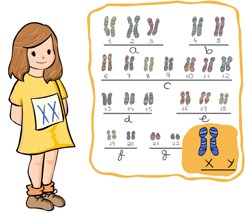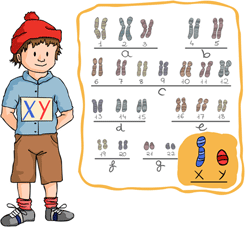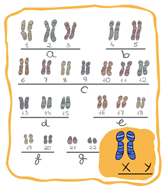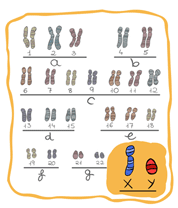Why do disorders develop?

Well, it is very easy to explain.
When there are errors in these characters or recipes, the information they express or encode is also erroneous, and this more often than not, although not always- leads to malformations or disorders.
Based on the chromosome where the anomalous gene or recipe is contained, we will have AUTOSOMAL DOMINANT DISORDERS and AUTOSOMAL RECESSIVE DISORDERS, and DISORDERS THAT ARE LINKED TO THE X-CHROMOSOME of a DOMINANT TYPE and of a RECESSIVE TYPE.
AUTOSOMAL DOMINANT AND RECESSIVE disorders, as their name indicates, refer to autosomes or chromosomes from set 1 to set 22, and these affect both man and woman alike.
SEX LINKED disorders refer to set 23. I would like to remind the reader that we will only be discussing those disorders that are linked to the X-chromosome. As we will be able to see, it makes a great difference whether it is the man or the woman who is carrying the defective gene.
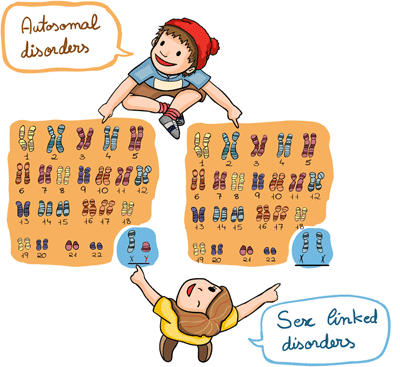
Given that we have two chromosomes from each set, that is, one inherited from our mother and one inherited from our father, for the same recipe or allele, within any set of our chromosomes, we may encounter any of the three following combinations:

Both information sets are correct

That both sets of information or alleles encoding for the same recipe are correct,
GOOD + GOOD = healthy individual
That one recipe is correct and the other incorrect,
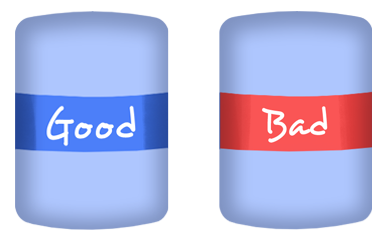
The result will be determined by the chromosome involved: if it is an autosome, or if it is a gonosome or sex chromosome.
GOOD + BAD = depends
Let’s see:
- For recipes or genes that are AUTOSOME-DEPENDENT (chromosomes from set 1 to set 22)
- For genes or recipes that are LINKED to the X sex chromosome (sex linked genes)
For recipes or genes that are AUTOSOME-DEPENDENT (chromosomes from set 1 to set 22)
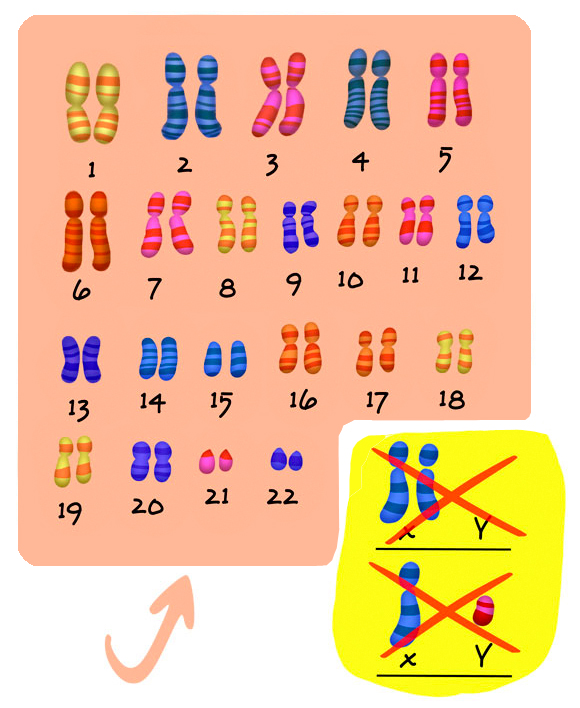
If the defective recipes are DOMINANT, the result will always be affected individuals or individuals who will express the character. On the other hand, if the defective recipes are RECESSIVE, the result will be healthy individuals who will carry the disorder or characters at issue (because in this case, as we will remember, the recipe will be in recess or hidden by the good recipe present in the other chromosome, which at this particular time is the dominant expression).
For genes or recipes that are LINKED to the X sex chromosome (sex linked genes)
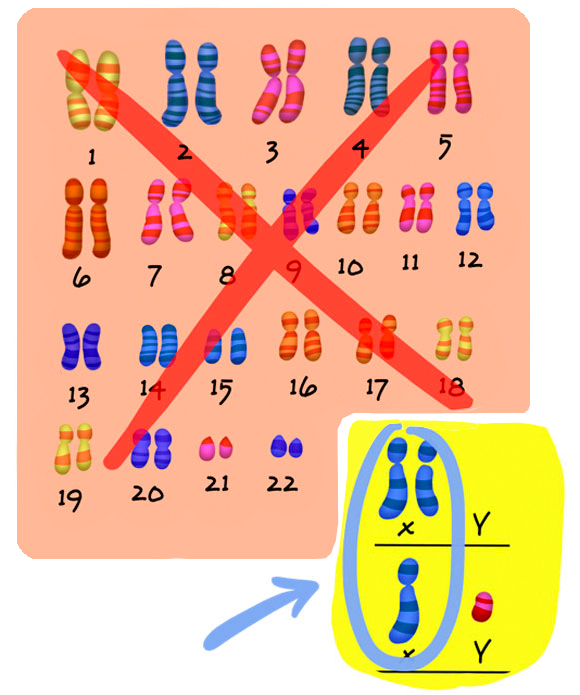
First, we will distinguish between dominant and recessive expression, and then we will individually evaluate these two forms of expression, depending on whether the carrier of the character at issue is a man or a woman.
If both recipes are incorrect
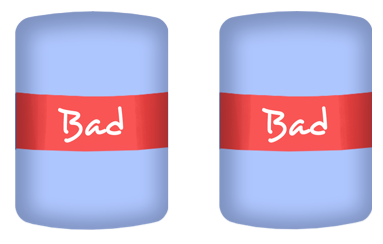
This combination will always produce affected individuals, both for autosomal and for X sex-linked (X-chromosome) disorders, irrespectively of whether these are dominant or recessive.
BAD + BAD = affected individual
At present, very few cases of autosomal dominant disorders and sex linked dominant disorders are known in which both alleles and recipes for the same character are defective or pathological and when this happens, the affected individuals tend to manifest the disorder or trait in a much more severe form, as both recipes are expressed together.
Imagine a double portion of a bad tasting cake. Awful, isn’t it?
Related questions
Next topic: What happens when our recipes combine with our partner’s recipes?
Reviewed: 11th of June 2016

